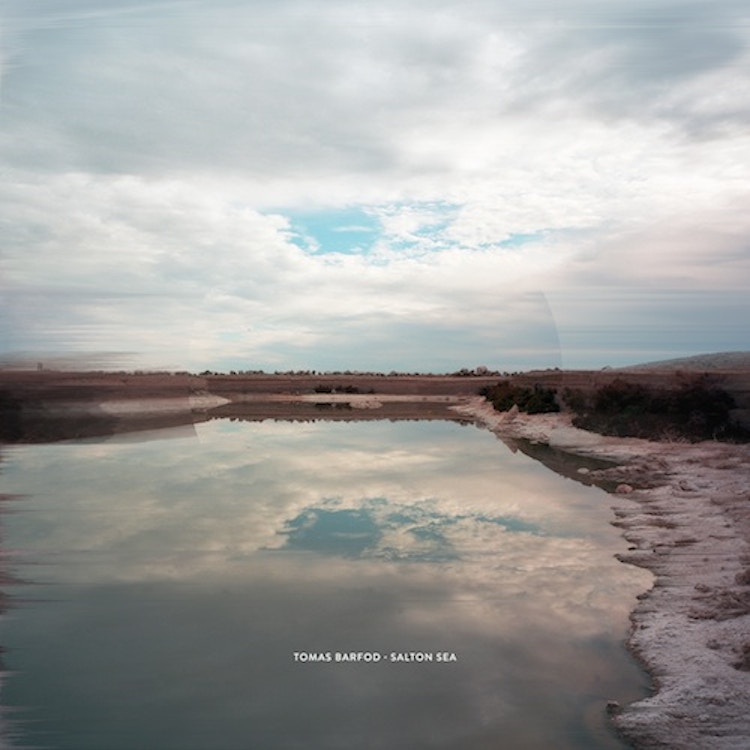"Salton Sea"

The Salton Sea lurks a few hours drive south of the resorts of Palm Springs, on the edge of the Mojave desert. It is a desolate place, a reminder of how quickly the luxury of Southern California gives way to empty expanses. At the edge of the sea, shoals of fish float belly-up, killed by the ever-increasing salinity of the water; abandoned shells of houses and hotels dot the banks here and there; and far to the south Salvation Mountain (a fifty-foot high pile of dirt covered in household paint) proclaims “God is Love”. In short it is a messy, dirty, broken place.
On the surface, Tomas Barfod’s album Salton Sea is completely unlike its namesake. A polished, professional, meticulous, mathematical, European dance album of the sort that we have come to expect from Kompakt. But underneath gloss one can’t help feeling that Barfod’s distant digital worlds aren’t so unlike this desolate, lonely corner of California.
Salton Sea is an album filled with immersive, artificial, perfectly quantized atmospheres. Barfod’s CV includes sound design for some pretty impressive fashion designers, and tracks such as ‘Python’ can sound like they are made for beautiful people to strut around to wearing sunglasses. And yet throughout the album distinct emotion emerges amidst the perfectly timed blips and beeps.
After opening track ‘D.S.O.Y.’, which is heavy on style and low on substance, lead single ‘Broken Glass’ is disarmingly sad. Beginning with fragile detuned guitars and twinkling bells, a mellifluous robotic voice breaking like a pubescent boy sings “I tiptoe in to broken glass, it hurts like hell I told you the past” before being joined by horns and arpeggiated synths. It’s a stunning and captivating combination (and might feel quite familiar to anyone who made it to the end of Portal).
‘Exstesizing’ and ‘Aether’ are two other stand-out tracks. The former builds from a striking loop of what sounds like a hammered dulcimer, adding layer upon layer of eerie bass and shimmering percussion to a heady climax that sounds about as post-rock as a song without guitars ever could. ’Aether’, on the other hand, begins in a manner very reminiscent of Four Tet’s ‘Circling’ before breaking up and dissolving into a sea of sine waves.
One of the album’s strongest points, and an element that keeps it from being simply a very well-produced desktop exercise, is the occasional use of female vocals. Nina Kinert’s contributions are particularly enjoyable – her layered voice has an eerie computer-like quality to it which matches perfectly with Barfod’s seething backing tracks. At the same time her voice is vulnerable, and human, and a little bit folky, bringing the otherwise overwhelming tracks back down to earth. Elsewhere Lydia Ainsworth adds a bit of mystery to the aggressive, ‘Silent Shout’-like, ‘Nighthawke’, though she suffers from having her clearest vocals detuned for no particular reason.
So the Salton Sea is an album of contrasts, jumping between soul-less trendy beats, beautiful intricate glockenspiels and bells, and disarming vocals, often within the space of a single song. It’s an album where Barfod seems at time unsure whether he ‘Came to Party’ or to cry over ‘Broken Glass’. He sets up expectations of accomplished but generic and uninspired ambient dance music, and then subtly defies those expectations with each successive track. His laptop doesn’t quite weep like Four Tet’s or reach the same levels of euphoria as The Field, but this is nonetheless an impressive debut, and one that bodes well for the future.
Get the Best Fit take on the week in music direct to your inbox every Friday

Lorde
Virgin

OSKA
Refined Believer

Tropical F*ck Storm
Fairyland Codex





